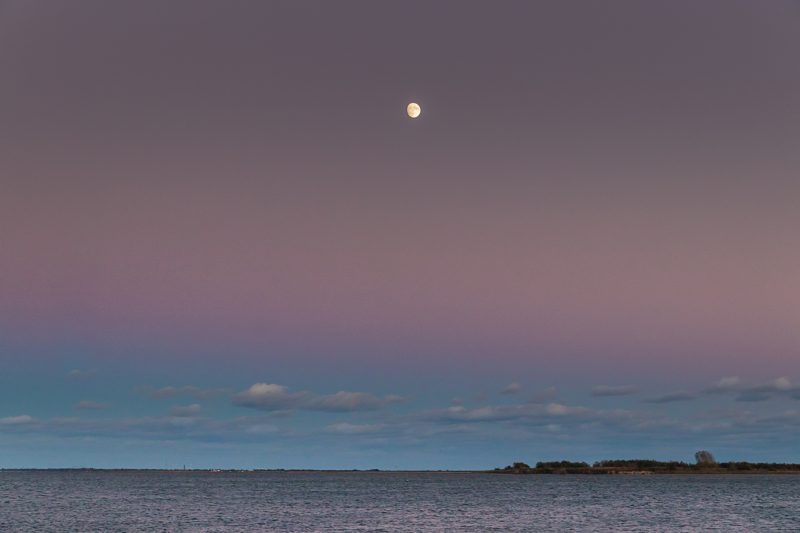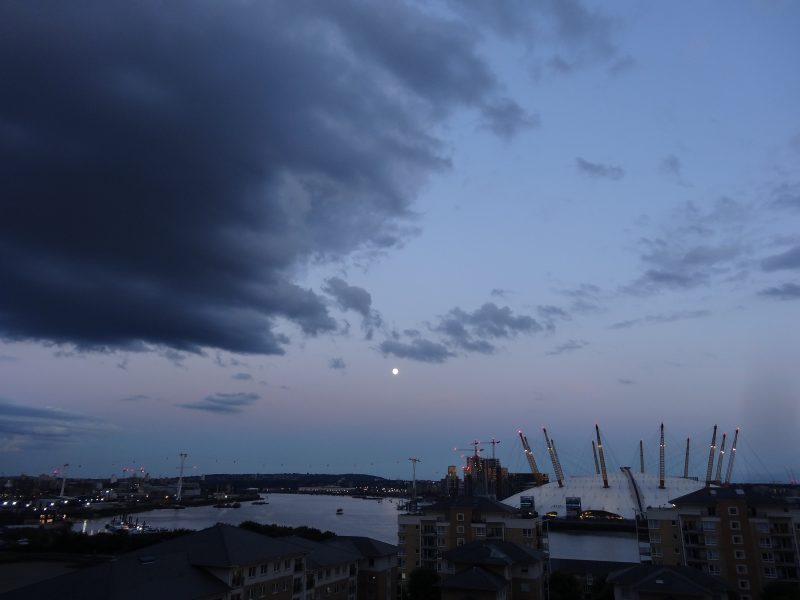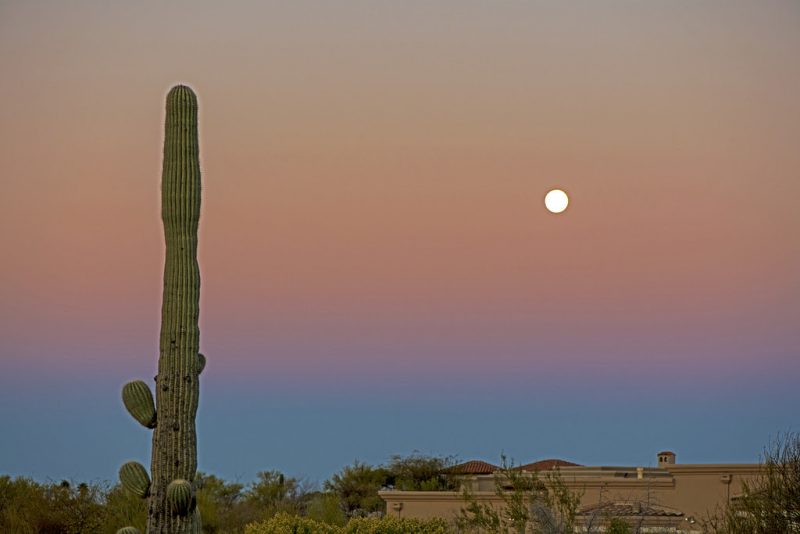
In both the evening and morning sky, try watching for Earth’s shadow, a blue-gray darkness in the direction opposite the sun, darker than the twilight sky.
The pink band above the shadow – in the east after sunset, or west before dawn – is called the Belt of Venus.
The lunar calendars are here! Get yours today. They make great gifts. Going fast!

Nancy Ricigliano from Massapegua, New York, caught the moon rising ahead of Earth’s shadow on October 21, 2018. She wrote: “I went out to see where the moon will be rising for the full Hunter’s Moon on Wednesday. I was able to capture the Earth’s shadow and the Belt of Venus!”
The moon phase shifts throughout the month, and sometimes you won’t find the moon in the night sky. Earth’s shadow, on the other hand, is more reliable. It can be seen any clear evening, ascending in the eastern sky at the same rate that the sun sets below the western horizon.
The shadow of the Earth is big. You might have to turn your head to see the whole thing. And the shadow is curved, just as the shadow of any round object is curved. Earth’s shadow extends hundreds of thousands of miles into space, so far that it can touch the moon. Whenever that happens, we see an eclipse of the moon.
Read more and see more photos: When can you see Earth’s shadow?

Sucheta Wipat caught the Earth’s shadow and Belt of Venus on a cloudy evening in London, August 5, 2017. Yes, you can see it from cities!

Earth’s shadow is the dark blue area above the line of the horizon, in this photo taken in January 2018 by Jörgen Andersson in Sweden.
Bottom line: Check out Earth’s shadow – in the east after sunset or in the west before sunrise – next time you have a clear sky. I often see it while out on the streets of my town as the sun is setting. The pink coloration above the shadow is called the Belt of Venus.
Enjoying EarthSky so far? Sign up for our free daily newsletter today!
from EarthSky https://ift.tt/2NWDcOz

In both the evening and morning sky, try watching for Earth’s shadow, a blue-gray darkness in the direction opposite the sun, darker than the twilight sky.
The pink band above the shadow – in the east after sunset, or west before dawn – is called the Belt of Venus.
The lunar calendars are here! Get yours today. They make great gifts. Going fast!

Nancy Ricigliano from Massapegua, New York, caught the moon rising ahead of Earth’s shadow on October 21, 2018. She wrote: “I went out to see where the moon will be rising for the full Hunter’s Moon on Wednesday. I was able to capture the Earth’s shadow and the Belt of Venus!”
The moon phase shifts throughout the month, and sometimes you won’t find the moon in the night sky. Earth’s shadow, on the other hand, is more reliable. It can be seen any clear evening, ascending in the eastern sky at the same rate that the sun sets below the western horizon.
The shadow of the Earth is big. You might have to turn your head to see the whole thing. And the shadow is curved, just as the shadow of any round object is curved. Earth’s shadow extends hundreds of thousands of miles into space, so far that it can touch the moon. Whenever that happens, we see an eclipse of the moon.
Read more and see more photos: When can you see Earth’s shadow?

Sucheta Wipat caught the Earth’s shadow and Belt of Venus on a cloudy evening in London, August 5, 2017. Yes, you can see it from cities!

Earth’s shadow is the dark blue area above the line of the horizon, in this photo taken in January 2018 by Jörgen Andersson in Sweden.
Bottom line: Check out Earth’s shadow – in the east after sunset or in the west before sunrise – next time you have a clear sky. I often see it while out on the streets of my town as the sun is setting. The pink coloration above the shadow is called the Belt of Venus.
Enjoying EarthSky so far? Sign up for our free daily newsletter today!
from EarthSky https://ift.tt/2NWDcOz


Aucun commentaire:
Enregistrer un commentaire